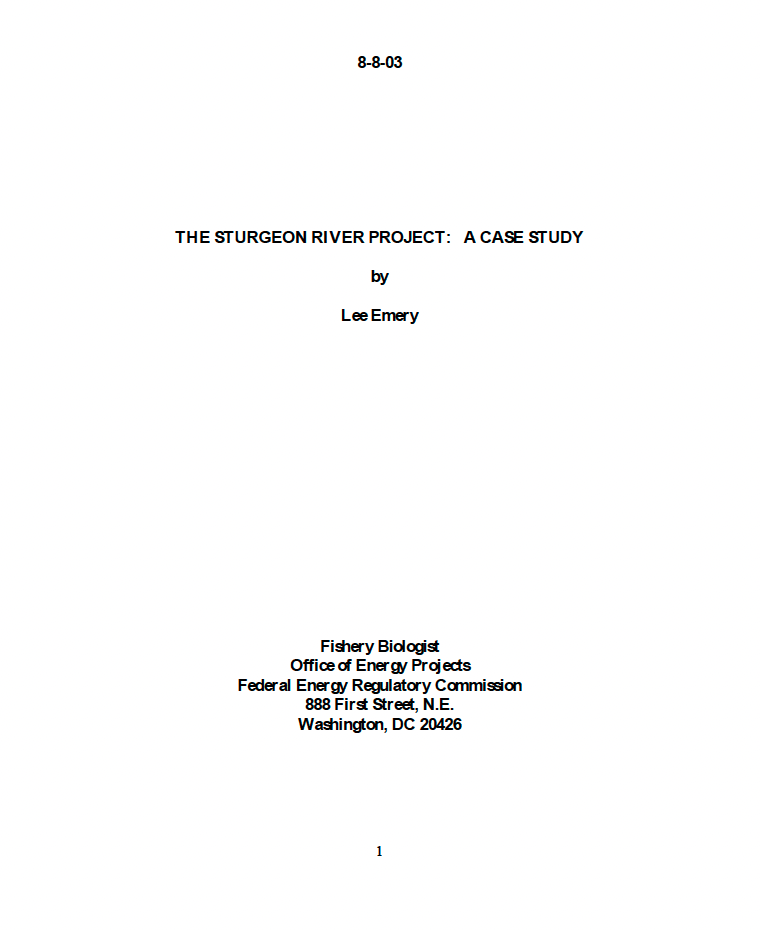This report by Lee Emery, Fishery Biologist for the Federal Energy Regulatory Commission, is the result of an analysis conducted of all dam removals and dam removal proposals for FERC-licensed projects. The report focuses on a case study of the Sturgeon River Project (P-2471), which has been removed since this study was written.
Introduction
FERC regulates, under the authority of the Federal Power Act, the licensing of over 1,600 non-federal hydropower projects located across the United States. You are familiar with these projects because they are in your backyard, so to speak, and produce the power used in many of your homes, even more so, if you are a resident of the Pacific Northwest. These projects include the mom-and-pop operations as well as the larger municipal and public utility district operations. Between 2000 and the year 2010 the licenses for 218 hydropower projects will expire. So, in the next few years, the licensees of these projects will have to decide whether they want to relicense their projects.
Dam Removals
A licensee may seek to surrender its project license during the term of the license or at relicensing, if itself or no other entity is interested in seeking a new license. When a license is surrendered, there are several options for disposition of project facilities. The licensee can: (1) quit generating power, lock the gate and ensure the project is safe and secure; (2) leave the dam in place and remove all generating equipment and block all power intakes; and (3) remove the dam and all project facilities. The dam removal option is seldom the option selected, but it has and does occur, particularly if the project is very old and is uneconomical to continue operating and maintaining. However, as noted, even with the surrender of a license, dam removal is not always part of decommissioning because dams provide other valuable public interest benefits such as flood control, water supply, recreation, irrigation, navigation, and valuable waterfront properties. In fact, to date, where dams have been removed under decommissioning represents less than 1 percent (0.8125 %) of all projects ever licensed.
I conducted a review of all the licenses issued by FERC to see how many dams had been purposefully removed or were proposed for removal. I want to stress that those projects where dams have been proposed for removal are truly just proposals and they may not ever be removed. I say this because the Commission would have to act on any formal proposal for dam removal once the action is presented to them.
In general, my review found that dams that were removed and proposed for removal were for the most part small, uneconomical projects that had reached a stage where relicensing them was not practical. In some instances, acts of nature, like destruction of the facilities by floods or filling of reservoirs with silt, speeded up the licensee’s decision to surrender the licenses. Other factors influencing the decision to decommission the projects range from agreements reached in settlements to operational and environmental costs and concerns, particularly those related to the need to provide fish passage facilities at the projects. A couple of projects among those proposed for removal were unable to get power purchase agreements and one project is part of an EPA Superfund cleanup site.
To understand considerations that go into decisions on dam removal, I will present a case study of one FERC-licensed dam proposed for and presently undergoing removal.


